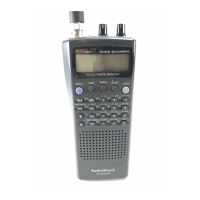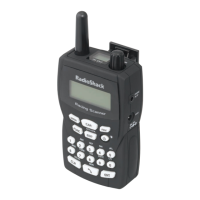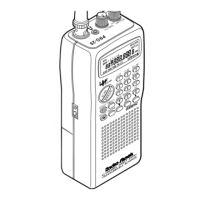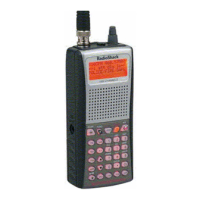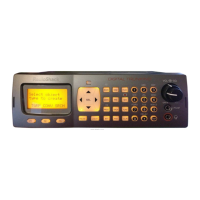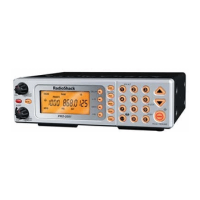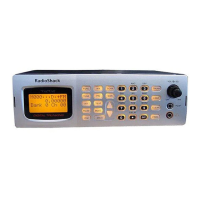22
Special Features
2. While you hold down
2
and
ENTER
, turn
on the scanner. The display shows
oFF
tonE
or
on
tonE
. Then release the
keys.
USING A COMPUTER TO
PROGRAM THE SCANNER
You can connect your scanner to a personal
computer and program frequencies into the
scanner from the computer using an optional
cable and software.
Note:
The necessary cable and software,
and additional information about using your
personal computer to program your scanner,
are available at your local RadioShack store.
BIRDIE FREQUENCIES
Every scanner has birdie frequencies.
Birdies are signals created inside the
scanner’s receiver. These operating
frequencies might interfere with
transmissions on the same frequencies. If
you program one of these frequencies, you
hear only noise on that frequency. If the
interference is not severe, you might be able
to turn
SQUELCH
clockwise to cut out the
birdie.
To find the birdies in your scanner, follow
these steps.
1. Disconnect the antenna and move it
away from the receiver. Make sure that
no other operating radio or TV sets are
nearby.
2. Search in each frequency band from the
lowest frequency to the highest. If the
search stops on a frequency, but you
hear no sound, chances are you have
located a birdie. Note all birdie
frequencies for reference.
The known birdie frequencies to watch for
are:
UNITED STATES
BROADCAST BAND
In the United States, there are several
broadcast bands. The standard AM and FM
bands are probably the most well known.
There are also four television audio
broadcast bands — the lower three transmit
on the VHF band and the fourth transmits on
the UHF band. You can use your scanner to
monitor the 470–512 MHz portion of the UHF
band.
29.800 122.9375 388.3875
30.375 128.000 398.5625
32.075 128.375 414.6125
38.400 136.5875 426.7875
40.000 149.400 431.1625
40.980 152.655 441.3875
51.200 160.470 457.4375
112.4875 162.200 462.7875
115.200 168.495 478.8375
120.5125 384.550

